Entropy fighters: on maintenance + Andy Campbell’s car (1.2 million km)
Why paying attention to the small, unseen work makes the difference between collapse and endurance. From solo sailors to your own body, what survives is what is carefully maintained.
Under the title Maintenance: Of Everything, Stewart Brand’s book-in-progress invites us to look under the hood of our civilization—because we’d be better off doing it.
Maintenance is so often an afterthought, delegated to hurried consultants or low-paid workers once failure is already underway, yet it’s the quiet difference between stalling and thriving, both individually and collectively. Brand argues that upkeep should be deliberate at every scale—personal, mechanical, social, planetary. Upkeeping is helpful at every scale.
More and more people argue that proper maintenance is what sets fine-tuned things, complex systems, and even people apart from their poorly-maintained counterparts. Let’s consider Stewart Brand’s opening to make the case: a 1968-1969 non-stop, single-handed, round-the-world boat race, the Sunday Times Golden Globe Race.
Lessons from the sea
Instead of a conventional or behind-the-scenes point of view, Brand chooses the always-overlooked perspective of what the solo racers have to do to keep their vessels in optimal condition in an exceptionally dynamic and unpredictable environment, the perfect petri dish to see what it takes when the cameras aren’t looking. So Brand, who’s shown his systems-thinking perspective over his trajectory, looks into the maintenance strategies of three iconic sailors: merchant navy veteran Robin Knox-Johnston (eventual winner), technically-minded innovator Donald Crowhurst, and minimalist adventurer Bernard Moitessier.
Crowhurst relied on elegant but often fragile solutions to the problems encountered during storms and other events. By contrast, Knox-Johnston, a weathered sailor used to following routine repair tasks, claimed victory at the end, thanks in good part to embracing the old culture of upkeep on the open sea.
But, to Brand, it was the sea vagabond Bernard Moitessier who excelled in the race. A purist, he only packed what was essential and stripped his yacht of anything other than the steel hull, layers of protective paint for corrosion resistance, and simple communication tools. He put it this way:
“Only simple things … can be reliably repaired with what you have on board.”
Nurturing a self-sustaining system
By simplifying, he could carefully study the state of the vessel as a whole, fine-tuning the critical parts and understanding that he and the vessel were a complete entity relying on each other. He sailed only with what he could repair himself proficiently (basic sails, rust-resistant paint, and simple systems like ropes and basic communication), ridding himself of potential liabilities.
And it worked out so well that the eccentric Moitessier could have won the race, but after sailing more than enough miles to win, he famously kept going instead of aiming at finishing the race and getting the trophy—he just wanted to continue his trip toward Tahiti.
By designing a system simple enough to fix at sea yet sturdy enough to endure the Southern Ocean, Moitessier embodied a truth that applies far beyond sailing: the most resilient systems are those that can maintain themselves with the resources at hand, without waiting for a battalion of expensive people in suits prescribing an unneeded rescue or replacement.
Many of us have never been closer to what Moitessier may have felt when being “one” with his vessel, let alone sailing solo across the globe, but those who care about the buildings, machines, cars, and other complex, dynamic systems in their lives have sometimes felt a sense of communion with some tool that seems to want to go smoothly forever and will never break—thanks not only to the tool’s build and intrinsic qualities, but also to their owners’ upkeep. That bond isn’t magic; it’s the product of attention, routine care, and small, steady interventions that keep the whole in tune.
Seen in this light, Moitessier’s voyage wasn’t just about seamanship; it was about inhabiting a self-sustaining system. And we all already live inside one: our own bodies.
The eternal adventures and battles inside our body
Like a yacht crossing unpredictable seas, our bodies are constantly buffeted by external forces—weather, pathogens, accidents—and internal ones—wear, decay, and entropy itself. Yet, without conscious oversight, they perform an astonishing feat: continuous, distributed, preemptive maintenance, from the molecular scale to the system level. Evolution has made our biological “vessel” a master of incremental renewal, swapping out parts, repairing damage, and keeping the whole operational even while life’s voyage goes on uninterrupted.
If we want to understand how to build cities, machines, and digital systems that endure and adapt instead of collapsing under stress, the best model might not be an engineering diagram—it might be the quiet, unseen maintenance that our own biology performs.
In simple terms, if we were to draw a mechanical metaphor with life, biology is very efficient at maintenance, constantly repairing and replacing the parts that integrate an organism at a molecular scale. Suppose we want to learn how to fix things and become ever more efficient with the necessary upkeep of the world around us. In that case, we should take a look at something that is once very familiar, albeit surprisingly obscure to us: our very selves.
Consider our body-and-mind combo, the best AI entity there is. We are a complex, finely-tuned, self-maintaining system that is very efficient at upkeeping itself. If we could peek through an endoscopic fluorescence microscope that allowed us to observe our cells in vivo and zoom out at once to get a bigger picture of the different areas of our body, we’d be mesmerized by the sheer complexity and beauty of the sight, comparable perhaps with an equally gripping image of an imaginary sequence plane (one with no visible cuts, just like the aerial beginning of The Sound of Music) going from a microscopic scale in a city to its satellite image, a gigantic zoom out capable of setting things in perspective.
Maintainers and the Ship of Theseus
Our biological self-maintaining system happens at a microscopic scale, programmed by processes fine-tuned by evolution since the appearance of complex cellular life with internal energy, or mitochondria.
This microscopic shop of constant fine-tuning doesn’t require our cognition for it to happen seamlessly, just like a city constantly repairing, tearing down, and rebuilding infrastructure, energy plants, landfills, buildings, and every single detail of the organism—all done while people still live there.
And, since cells have different lifespans but ultimately decay, much of our body will be replaced multiple times in our lifetime, which means that my “I” today is made of atoms and molecules that have passed through countless renewals. In the end, our biological reality is shockingly close to the idea of the universe held by the ancient atomists from the Greek pre-Socratic philosopher Democritus to the Roman poet Lucretius, which explains the dance of particles conforming entities that come and go in the world over time in his poem De Rerum Natura, master work lost to scholars during centuries and ultimately recovered at a German abbey before it was too late (if you’re interested in this topic, get The Swerve, a 2012 Pulitzer Prize winner by Stephen Greenblatt).
What keeps our body and conscience both self-maintaining and staying “us” over the decades is a mix of genetic instructions, cellular feedback loops, and system-level regulation—just like a well-written, extremely complex software program running on an equally complex piece of hardware that is constantly being replaced and under construction. This is a question we’ve posed to ourselves since ancient times. In the Ship of Theseus, Greek philosophers faced a puzzle: if a vessel has all its parts replaced over time, is it still the same ship? Is identity defined by the original materials, by form, or by something else entirely that has to do with the whole (say, the design, refinement, use, and repair of the ship by generations of artisans over TIME)?
Replaced to stay the same: I, myself, and me at different ages
Zooming in, we’d see many things happening, though the activity would overwhelm us and we’d hardly understand what’s happening, just like an early nineteenth-century soldier who loses the macro idea of the battle as he advances in the field (as explained by Stendhal in The Charterhouse of Parma, and replicated by Tolstoy in War and Peace): DNA in our cells hold the master instructions, present at each one of our cells (that’s real redundancy); RNA, more primitive than DNA, is the “working copy” of DNA instructions, acting as “messengers” to dictate what needs to be fixed, replaced, or produced; proteins (enzymes, hormones, etc.) are the “machines” that repair across our body; communication networks (nervous system, endocrine system, immune system) and immune checks keep the replacement accurate and in-sync (a bit like replacing entire urban systems seamlessly while everything keeps running and nothing is interrupted).
In complex, vertebrate beings like us, the immune system, an army of cells patrolling the body to get rid of pathogens and waste, prevents our body from replacing functional parts with others that would harm us; and, like any advanced, fine-tuned complex system, a high-level array of organs and sensors provide feedback and constantly check our brain, blood vessels, and organs to monitor temperature, pH, nutrients, oxygen, etc (via a process called homeostasis).

Most cells get replaced over time, though a few crucial ones have almost no turnover, and we can use our conscience to ensure they last in the best shape for as much time as possible, affecting our thinking, our sight and balance, and cardiac muscle cells: most neurons in the cerebral cortex have been there since our birth, although they constantly redo and reshape their connections; the core fibers conforming the lens cells in our eyes are also original; and though replacing, cardiac muscle cells do so at such a slow rate that many persist for life.
As a healthy, lean, 48-year-old male who’s been running daily for two decades, my cell turnover rates are likely to have remained higher (read: more efficient) than other people my age for most tissues, but a higher turnover doesn’t imply more cells as an aggregate, just more “maintenance.” What does remain from my baby self? Most neurons in the cerebral cortex, around 30-40% of the original muscle cells, most lens fiber cells in my (slightly myopic since 16) eyes, and a few other long-lived cells. The rest of “me” has been completely replaced several times over, as in the case with you, dear reader.
Fine-tuned by evolution
To remain a well-running endurance machine that has kept only a few vintage parts (mainly in the brain, eyes, and heart), middle-aged adults have allowed their bodies to undergo a complete biological renewal without becoming other entities. We are the same, adding entropy and a grain of salt to the equation, and this “miracle” depends on a well-run system of proper maintenance, which we could emulate in the complex systems we build around us.
How could the machines and complex systems we build (from computers to cities, to AI) learn from our body’s self-maintenance to be more efficient and ensure renewal without total or partial interruption, or a loss of integrity when they are fixed and improved?
When not sick or unbalanced, biology achieves renewal while working in small, distributed increments of elements that are still functional but will need a replacement to work at peak performance. Millions of years of evolution from our distant unicellular relatives, eukaryotic cells to us, have perfected systems to detect and respond to damage early, or even when it’s about to occur but hasn’t yet materialized, just as if our body “knew” entropy (essentially, the tendency of things to decay over time) by heart.
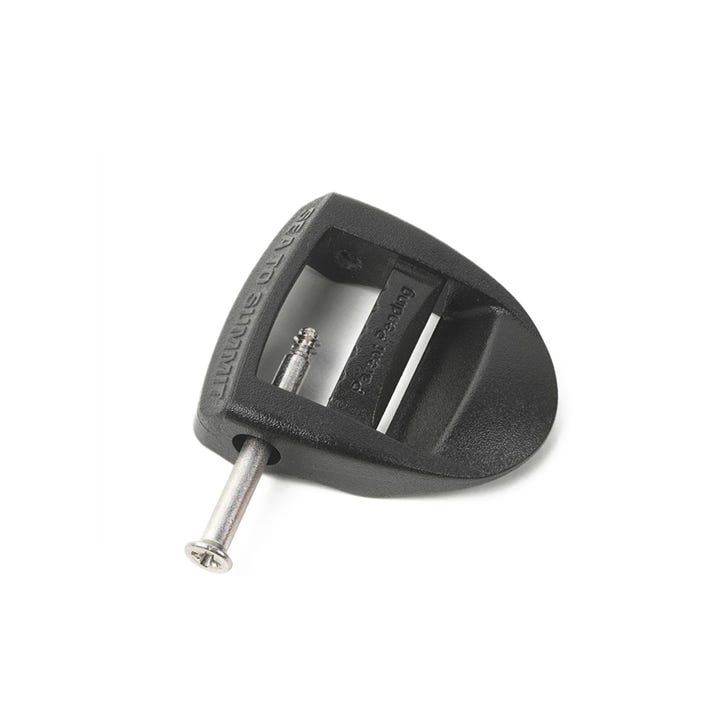
It isn’t only that our organism fixes itself incrementally and in a preemptive rather than reactive way (early on, instead of when it’s too late to prevent things from being critically affected or falling apart), but it does so by using a system of “good averages” or indicators to regenerate and build redundancies instead of discarding and rebuilding things that are in good shape, using modular, easily replaceable “components” with highly compatible interfaces. For example, tissues are plug-and-play at the cellular scale, allowing our skin to heal from a cut without being “reinstalled,” and that’s why we’re getting better at triggering tissue regeneration in patients who have suffered burns, accidents, or serious illness.
Even more incredibly, our organism does all this using constant communication and feedback loops for better resource allocation and hormone production, for example, telling us that we need to rest in order to trigger a necessary daily renewal.
A better, slowed-down entropy: if things got old more gently
Unlike in biology, where redundancy is essential for us to stay healthy or simply alive (our heart can lose a few cells without stopping, while our brain can reroute functions when there’s brain damage and organs have spare capacity), our society’s obsession with a reductionistic way of understanding efficiency has led to human systems like cities, societies as a whole, or computer models that pretend to be lean by reducing redundancy, and hence becoming more prone to disaster.
Compared to biology, our conception of maintenance and efficiency isn’t only flawed but unnecessarily prone to malfunction. As an example, instead of building homes in harmony with an environment that provides food and protection adapted to every season, as techniques like permaculture are trying to popularize, urban and suburban, or even rural environments nowadays choose ways that rely on “fixes” to things that aren’t properly conceived and shouldn’t need any patch to begin with (for example, by building homes that don’t stand the heat or the cold like organisms do and instead rely on a constantly-running HVAC machine.
Biology practices an active, sustainable upkeeping that acts early and very efficiently, and at the same time, reduces risk by embedding redundancies across the board so we survive as many unpredictable conditions as possible (we have two kidneys, extra neural pathways we may never use, and enough stem cell reserves for several lives well lived).
And, even with the advantage of upkeeping and doubling down in crucial places, many feel far from achieving lives as illness-proof and shock-proof as they’d like. That said, with all the unpredictabilities they face, complex organisms understand that efficiency isn’t about the use of minimum resources at any given moment but about planning to ensure survival under many circumstances, so the cost of a little extra capacity is tiny compared with the benefits of this strategy.
The problem with 0-redundancy lean systems
By contrast, modern societies have spent the last decades implementing a reductionistic version of efficiency that consists of cutting anything that isn’t producing immediate, measurable output. By getting rid of redundancies, systems become leaner and just-in-time (like cheap supply chains, single power sources that work “for now” but have no backup, having minimal and poorly paid staffing, etc.), a model that works beautifully in a best-case scenario. Until the unexpected happens and the system stalls when a shock hits (due to weather, political decisions like tariffs, overreaction to pandemics…). In human-designed “efficiency,” when the unexpected happens, there’s no cushion and little margin for dysfunction, so failure is widespread and sometimes total.
One book I cherish on maintenance isn’t as boring as one might think: Robert M. Pirsig’s 1974 Zen and the Art of Motorcycle Maintenance is an engaging biography with a deeply touching and at once philosophical background issued from a road trip that the author took with his teenage son and a couple of friends. Though 121 publishers turned it down before finally finding a fit, it has sold 6 million copies in 27 languages since.
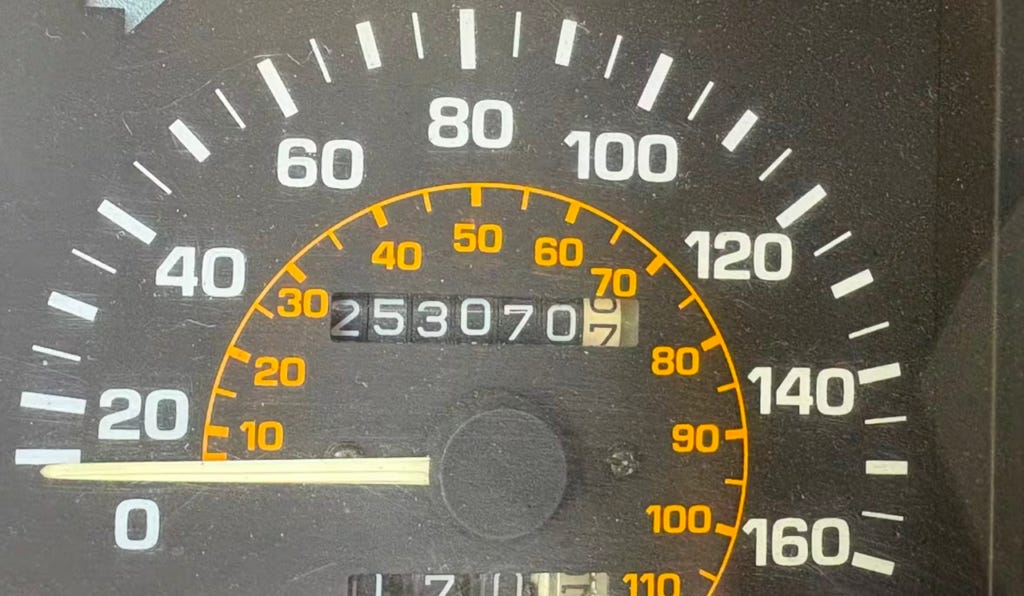
Often referred to as ZMM, the book became an evergreen essay (especially among tech workers upkeeping large code repositories) for many reasons, among them the poetical way in which Pirsig identifies the je ne sais quoi that many of us feel when we enter the zone while using a well-maintained machine that blends its momentum with our intention to become a sole entity (for example, Pirsig feeling how the motorcycle is running on a warm day while rolling on winding high-desert roads).
Pirsig’s book is an attempt to understand how maintenance in dynamic, complex systems creates the magic we call “quality,” and he even attempted to define the “metaphysics” of it (MoQ), first in ZMM and with more detail in Lila: An Inquiry into Morals (1991). On it, Pirsig tries to leave behind our deeply ingrained perspective of reality that separates us from what’s around, a subject-object framework creating artificial boundaries among things.
Old wooden temples and the “metaphysics of quality”
If we acknowledge that we can perceive things differently, perhaps we’ll be ready to “sense” what a cherished car or piece of cloth needs to keep its optimal state over time as we use it. And, what’s better, we could use this holistic approach with all sorts of things, from “dumb” objects (a belt, a pair of shoes, a piece of clothing) to complex machines (a car, a computer) to software (from basic protocols to Large Language Models).
We might think that we’ve never quite integrated into complex upkeeping a systems thinking as effective and intuitive as biology. Many examples are contradicting this pessimism; the Ise Grand Shrine (Ise Jingū), a Shinto shrine in Ise City (Mie Prefecture, on the eastern coast of Japan’s Kii Peninsula), is a meticulous wooden temple that has been standing for over 1,300 years.
However, this is a very particular “old” shrine with two sites a file miles apart from each other, Naikū (inner shrine) and Gekū (outer shrine): every 20 years, its wooden buildings and parts are dismantled, then rebuilt using the same traditional techniques in a ritual called Shikinen Sengū, which means that, like in our organism, barely any original material other than the building’s shape, integrity, and “spirit” survive from the beginning. But in the same way we keep being “us” across all our existence, the shrine’s craft and structure are considered continuous and unchanged.
Also in Japan, another ancient temple, this time the Buddhist wooden building Hōryū-ji in Nara, has followed a similar process since its inception, though, like in our own organism, a few key timber parts remain from the original 7th-century version.
I’ve been thinking about maintenance applies to the things that surround me, as time goes and I reflect on the appreciation I feel for things I keep for years or even decades, most of which require little upkeep and share one particularity: they all were designed to comply well with their function and are simple and rather utilitarian, though each one elegant in their own way. It’s perhaps this philosophy that has allowed these very different things to age gracefully and, from my subjective point of view, get better as I help them fight entropy.
A backpack that will last decades
In the spring of 2006, just before marrying in Barcelona, I bought a suit and splurged on a leather belt. With only occasional conditioning, it lasted until this spring—nearly twenty years. One of the two holes I used finally cracked, but otherwise, it had endured countless outfits, travels, and daily wear. The belt’s durability wasn’t magic: it was well-made, simple, and suited to its function. Over time, my care helped it age gracefully, just as attentive maintenance preserves any complex system.
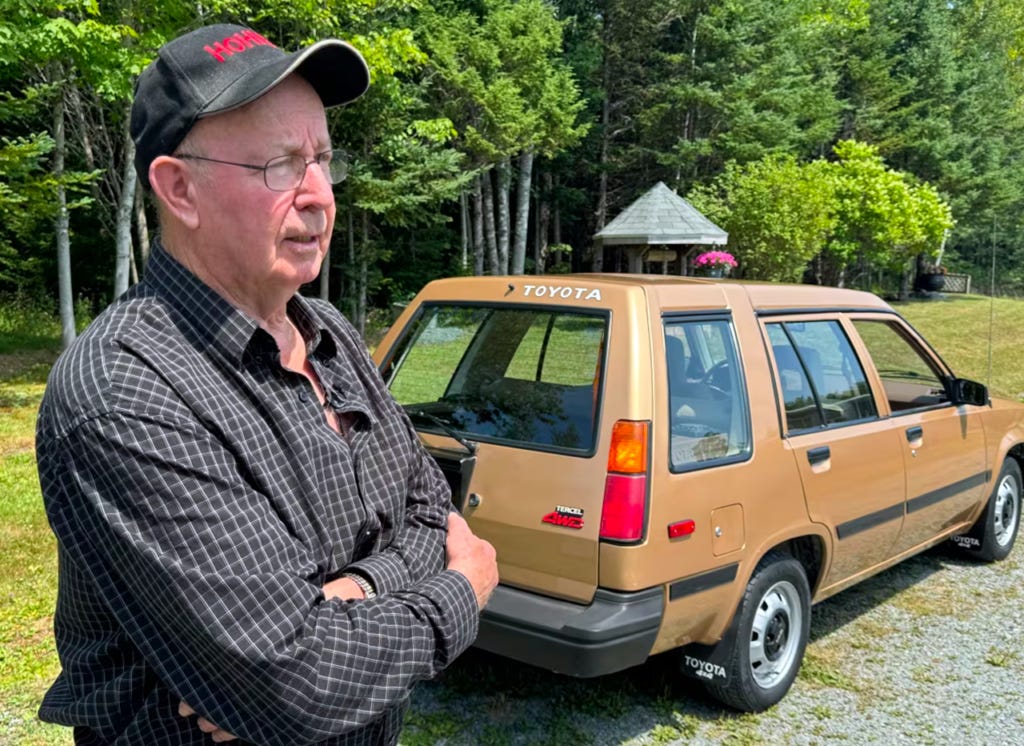
My records don’t go that far, but around 2014 or so, when we still lived in Barcelona, I bought a conventional nylon backpack with two main compartments and one front organizer pocket with built-in organization for all sorts of things. It felt easy to use and convenient from the beginning, and soon I realized it was also well-built, and the zippers would last. I wasn’t mistaken, and the dark backpack delivered.
However, after a mere three or four years, a run in the metro or bus to the store and an overly optimistic purchase prompted me to overload the backpack, and I found out the point of least resistance in it: the strap buckle, that little plastic piece to secure straps, was made of weak plastic and broke.
I remember thinking for a moment that I had to get rid of the whole backpack due to that incident, for the cheap, broken buckle wasn’t removable. It only took me a few online searches to find the solution that has kept that backpack to my side to this day: a repair buckle with metallic removal pins like these did the trick.
Prisoners of planned and unplanned obsolescence
It’s unsettling to think about the millions of perfectly fine objects and machines we use that may break in one or a few weak spots due to poor materials or rushed production and assembly by today’s overexploited supply chains, which get tossed away with no hesitation thanks to planned or unplanned obsolescence. Over the decades, industrial and electronic production has evolved from high-quality, open, repairable systems to proprietary, cheap to produce, closed, and short-lasting ones.
And nobody is complaining, above all because the upfront gains are sometimes palpable: our refrigerators from the 50s lasted forever (in fact, my parents keep at their second house a refrigerator they bought before I was born that has never failed, and sometime ago we visited David Lee Hoffman in Lagunitas near San Francisco, and he showed us his postwar refrigerator, still working like the first day). Newer models will never last as long, but in contrast, they cost less than their old counterparts adjusted for inflation and salary increases, and consume much less energy.
In 2015, when I bought a car first sold in 1991 that had been produced in Austria in 1989, a G-Wagen model 230 GE with a legendary engine, the W460, I never did it because it was efficient or convenient (it’s none of these things). Kirsten and our kids never liked this machine as much as I have, even knowing that I had to replace the engine eventually, and many pieces were close to hitting Theseus’s Paradox: due to a lack of maintenance, some rubber and plastic-made elements in the engine would need to go. There were also other unknowns: what was the condition of the alternator? And how about the direction, and the drum brakes in the back?
Sure thing, I drove the car with the care Pirsig narrated his adventure with his motorcycle, which he used as if there was only one entity, one man-machine similar to one of those creatures of antiquity, like the centaur. So I never minded to be the Don Quixote of my own Rocinante, and sure thing the car did break sometimes, but it did so like good machines do: in a predictable, elegant way. The only problem, I soon realized, was that the car needed a mechanic who was about to disappear for good, one capable of making a diagnosis by listening to the owner’s Pirsig-style musings, who knows old cars so much that they can make reasonable conjectures.
Building one’s own Ship of Theseus
It took me some time, but I found two teams of mechanics (one in Dijon, France, and another near our country house south of Barcelona), who always welcomed me as if I were one of the last Romantics, holding together an old car so primitive that I’m capable of diagnosing and maintaining the fuse box myself. With the old G-Wagen, they don’t use a machine that tells them what’s happening, but have to go with their rule of thumb.
This summer, as I used the car in a hot wave, I realized the car was getting really hot when stopped in traffic, and I assumed it had to do with the water pump going from the refrigerator (which had a normal level of liquid, as I tested it myself when the car was idle and cold, for if one opens the coolant diposit after using the car my get his face burned) to the engine.
It took my car mechanic a couple of old-school tests to tell me I was entirely wrong, and he knew it by experience: old cars relied entirely on an efficient radiator and the water pump to stay cool, lacking auxiliary fans in key places. What I didn’t know is that old cars, especially those that stay idle for big chunks of time, can get their refrigerators clogged, and one needs to clean them with a high-pressure liquid once every few years; once I did so, he told me, the old machine would be cruising the road like there was no entropy in the universe.
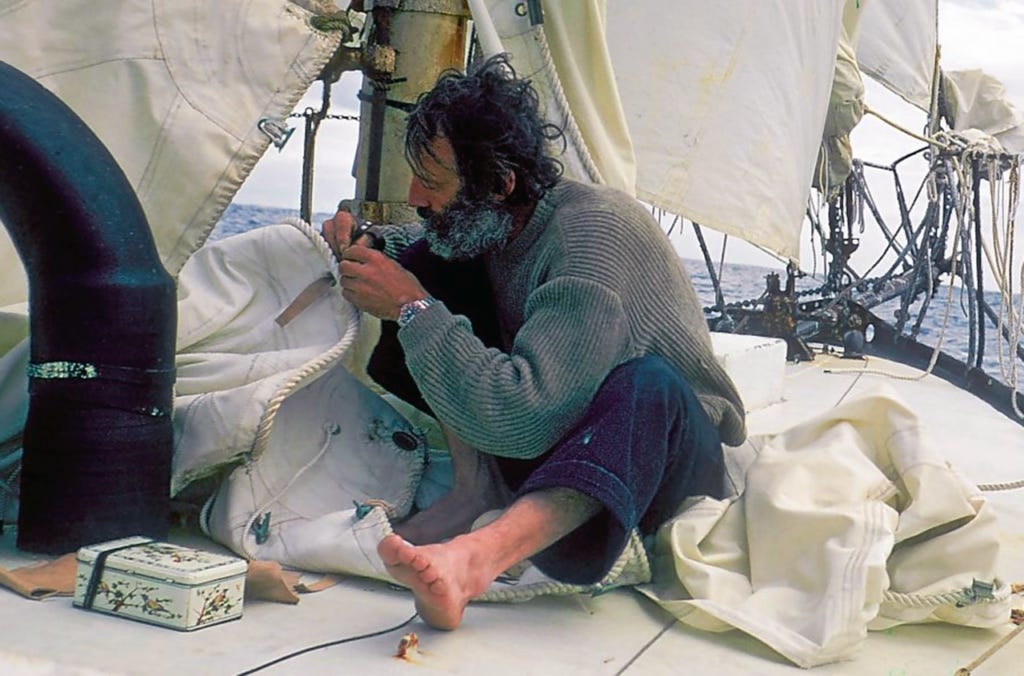
My very own Ship of Theseus was designed with a comical understatement: it comes with a 5-digit odometer, which means that it goes back to 0 after 99,999 kilometers, and so I bought it when it marked 16,000 km. I had to change the engine at 33,000 km in 2016, and since then, the car has gone over the mark once and is back to 32,000 km, or about to hit 100,000 km on the new engine. Meaning that, with proper care and upkeep, it has ahead of it a life as long and productive as I or any other future owner wants.
You’ll meet a good maintainer when, if talking casually to him, you realize that he decided to get rid of or replace things with remorse and because he wanted a change, not because those things had reached the end of their life cycle. Another clue to spot the maintainer tribe: they care about who will use the things they are giving away next, and sometimes prefer not to get rid of them if they aren’t sure the person interested is up to the task.
Andy Campbell’s 1985 Toyota Tercel
Due to planned obsolescence and a pervasive culture of convenience that associates prosperity and well-being with the superficial act of constantly buying new things we don’t really need, maintainers are in decline, although there always will be outliers.
Enter Andy Campbell, a resident of Wyses Corner, a rural area of Nova Scotia, eastern Canada. He routinely has driven his beloved old Toyota station wagon into Halifax and back during his working life; now retired, he continues doing so, which he (and his car) like. Frances Willick explains his story on CBC News.
Campbell owns and drives a 1985 Toyota Tercel that has logged over 1.25 million kilometers (around 775,000 miles) on essentially the same engine, not bad for a car he purchased second-hand in Halifax around 1990 for CAD $2,500, when it already had 125,000 km on it.
What’s even more exceptional (and I think explains the car’s lifespan) is that Campbell has taken care of the upkeep by himself, handling virtually all maintenance except for front-end alignment; to perform the task properly, he accumulates a stockpile of spare parts in the shed so he doesn’t have to rely on over-jealous intermediaries incentivized to make anyone toss their old cars and buy new ones.
Andy Campbell isn’t a “car guy,” he just thinks he has found his car and keeps it smooth, and they both seem to like each other to the point of becoming a dynamic whole when cruising the road. To him, the old Tercel is as practical, affordable, and reliable in snowy weather as a car can be.
The things we wanted to keep but were incentivized to toss away deserved the chance that our Romantic selves wanted to give them. It’s too late when, after buying a new thing replacing an old one, we realize we traded off an old open system we can understand and fix for a closed, proprietary black box that will run smoothly until it doesn’t, and then we’ll realize we weren’t owners, just mere customers of a never-ending scheme of planned obsolescence.





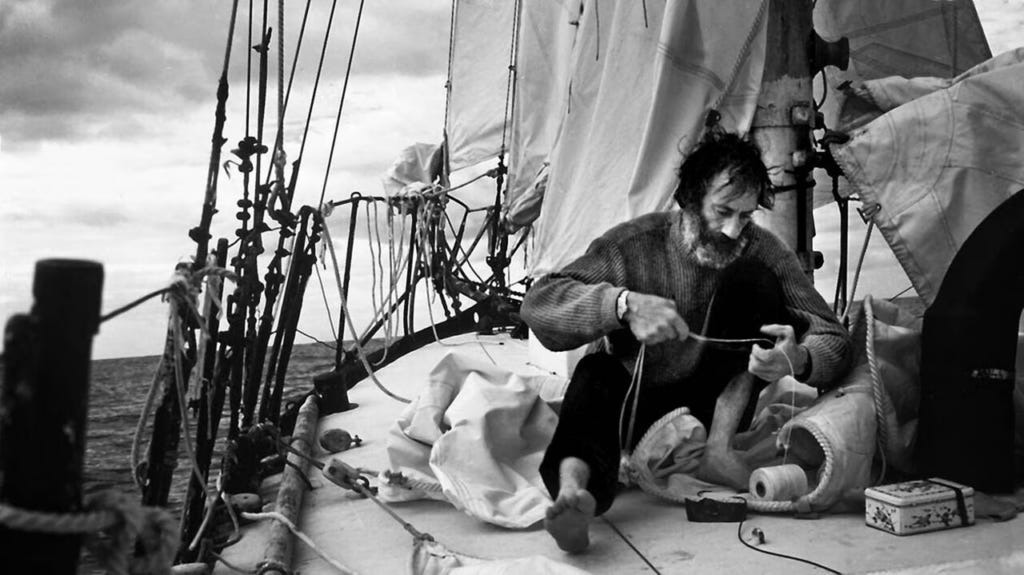
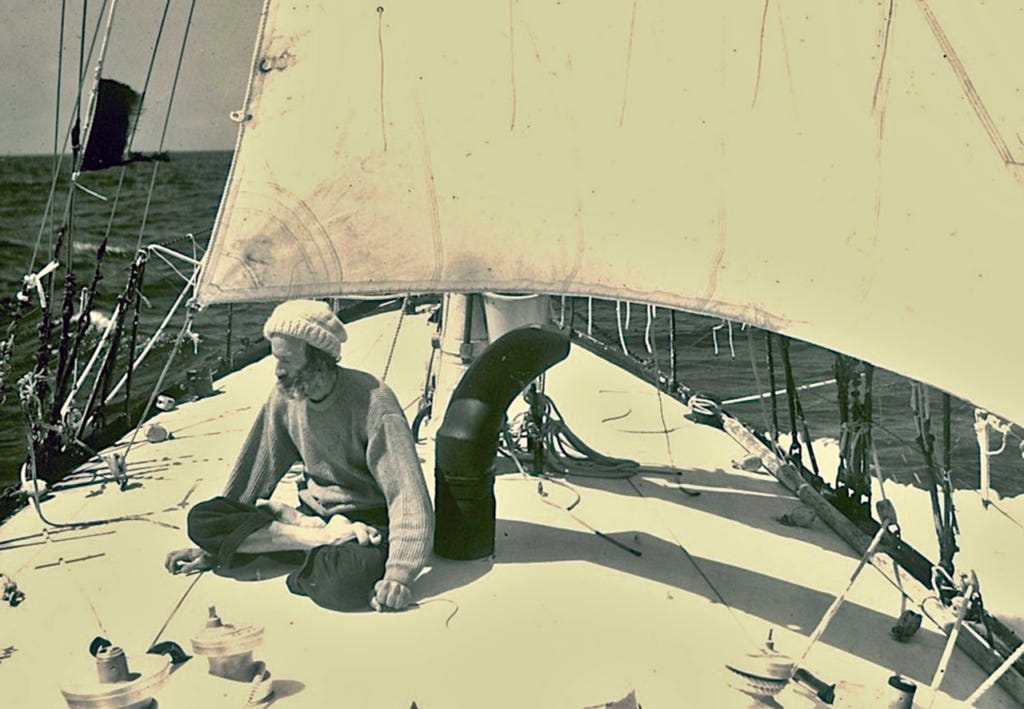
"The Long Way"